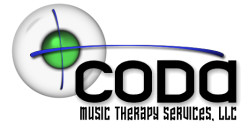What is music therapy?
Music therapy is an allied health profession – such as physical therapy, occupational therapy, and speech therapy – in which a credentialed music therapist facilitates music interventions designed to address physical, psychological, cognitive, and social goals of his or her clients.
What is the difference between school-based music therapy and music education?
In music education, the purpose is to increase knowledge and skills in music. In music therapy, music is used to increase skills within other domains, including academic, cognitive, physical, speech/language, social, and/or emotional goals.
Can music therapy be included on an IEP?
Music therapy is considered a related service under the Individuals with Disabilities Education Act (IDEA).
How is music therapy assessed?
The Special Education Music Therapy Assessment Process (SEMTAP) is used to assess eligibility for music therapy services. The SEMTAP is a criterion-based assessment tool designed for students with a current IEP. The process for administration of the SEMTAP is as follows:
- Review of student file and current IEP
- Observation session (without music) and interviews with treatment team members
- Music therapy session
- Drafting of a comprehensive, written report
- Consultation with the treatment team.
For the SEMTAP, it is important to compare the student’s functioning in their typical educational environment with their functioning within a music therapy session. It is this comparison which allows us to evaluate whether music therapy is an advisable treatment approach. At CODA MTS, all SEMTAP assessments are conducted by a Master’s level, board certified music therapist.
Is music therapy evidence-based?
Yes! The American Music Therapy Association has compiled a bibliography of some of the research supporting music therapy within special education. View it here.
